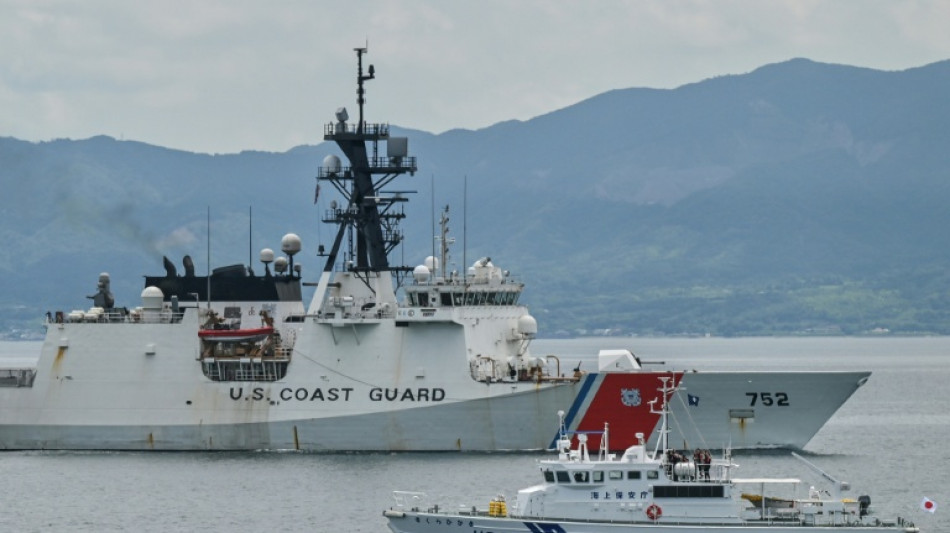

Japan-US-Philippines coast guards simulate crisis amid China threat
Helicopters buzzed in the shadow of a smouldering volcano and boats rescued dummies from the sea this week in a show of maritime unity by Japan, the United States and the Philippines.
The joint coast guard exercises held off Japan's southwest shore follow a warning from the three countries about Chinese activity in disputed regional waters.
Tensions between China and other claimants to parts of the East and South China Seas have pushed Japan to deepen ties with the Philippines and the United States.
This week marked the second time the countries' coast guards have held training drills together, and the first in Japan.
They took place over five days off the coast of Kagoshima, where Sakurajima volcano dominates the skyline, quietly puffing out smoke and ash.
Dozens of personnel took part, with Friday's final exercises featuring one vessel from each of the three countries' coast guards.
They included the BRP Teresa Magbanua, which was provided to the Philippines by Japan through a loan agreement.
The 2,265-ton vessel, named after a schoolteacher and revolutionary, usually monitors Chinese boats in the South China Sea.
China and the Philippines have engaged in months of confrontations in the contested waters, which Beijing claims almost entirely, despite an international ruling that the assertion has no legal basis.
Chinese and Japanese patrol vessels in the East China Sea also routinely face off around disputed islands.
On Friday, Manila accused China of using a water cannon on two of its fisheries department boats as they attempted to resupply Philippine fishermen near the disputed Scarborough Shoal.
- Man overboard! -
The US Coast Guard was represented in the exercises by the cutter Stratton, which can carry up to 170 personnel, and Japan by the 6,000-ton Asanagi.
Friday's drills began with a simulation of a person falling overboard.
Once the dummy, wearing a bright red lifejacket, was in the water, a US drone was launched from the Stratton, circling high above as it scanned the area.
A small Philippine rescue boat then emerged from the Teresa Magbanua, zipping across the water before coast guard personnel fished the dummy out of the water.
Other rescue scenarios enacted included a Japanese helicopter racing from shore to pull a human subject from the sea.
The helicopter's rotor blades whipped up the calm blue waters, where the occasional small hammerhead shark could be seen idly swimming alongside the Asanagi.
The exercises concluded with a simulated collision and fire, with all three coast guards blasting the stricken vessel with their water cannons.
- Trust-building -
Japan Coast Guard official Naofumi Tsumura said the joint exercises had "built mutual understanding and trust".
"More than anything, we have strengthened coordination and cooperation between us," he said.
In 2024, the three countries issued a joint statement that included strong language aimed at Beijing.
"We express our serious concerns about the People's Republic of China's (PRC) dangerous and aggressive behavior in the South China Sea," it said, describing "dangerous and coercive use of Coast Guard and maritime militia vessels".
They also expressed "strong opposition to any attempts by the PRC to unilaterally change the status quo by force or coercion in the East China Sea".
This week's joint exercises were the first since the statement was released.
Tsumura said there were small details that could have worked better and vowed to improve in future collaborations.
He said the three countries' coast guards had "come to understand each other better, or as the Japanese often say, to know each other by face".
"I believe we are now able to conduct maritime rescue operations more effectively," he said.
J.Mueller--SbgTB

